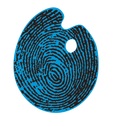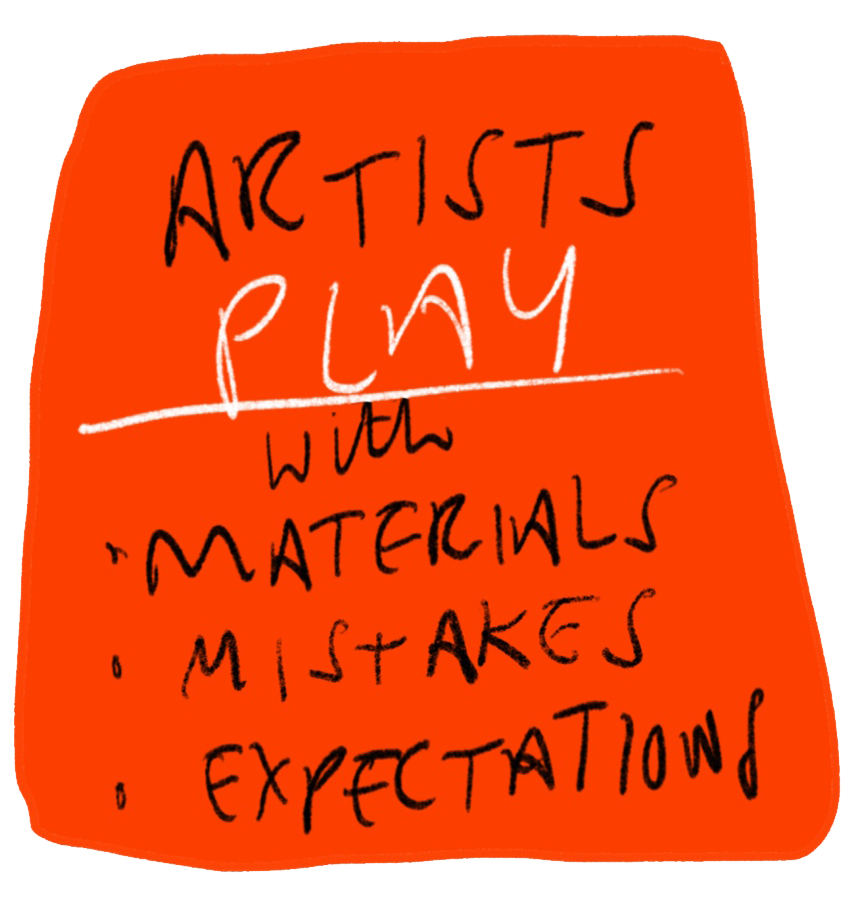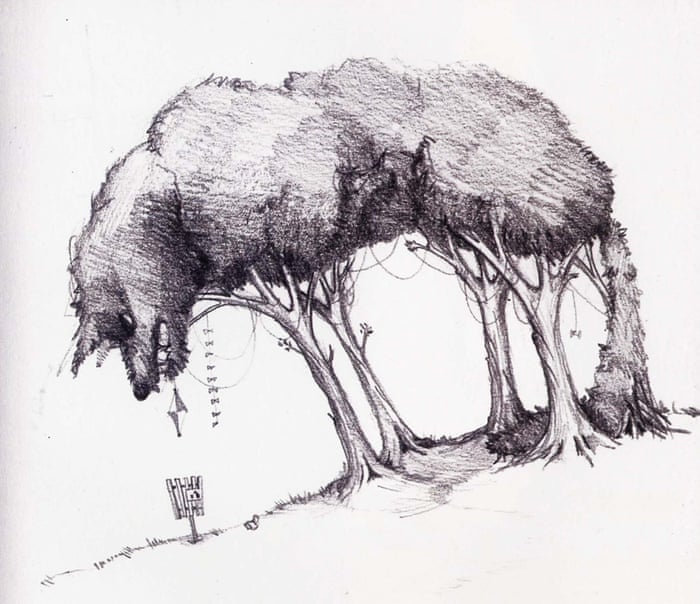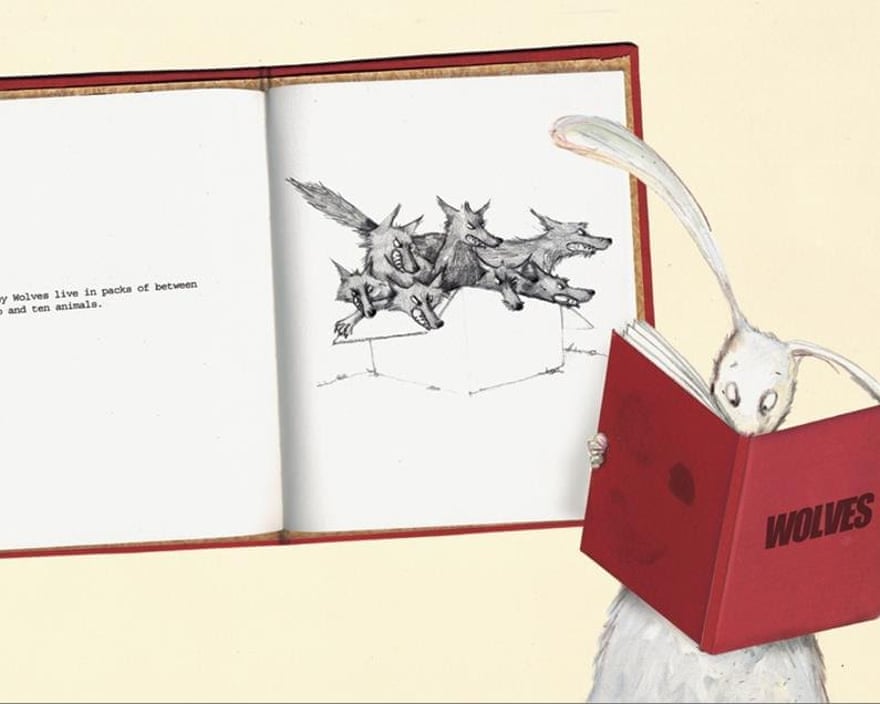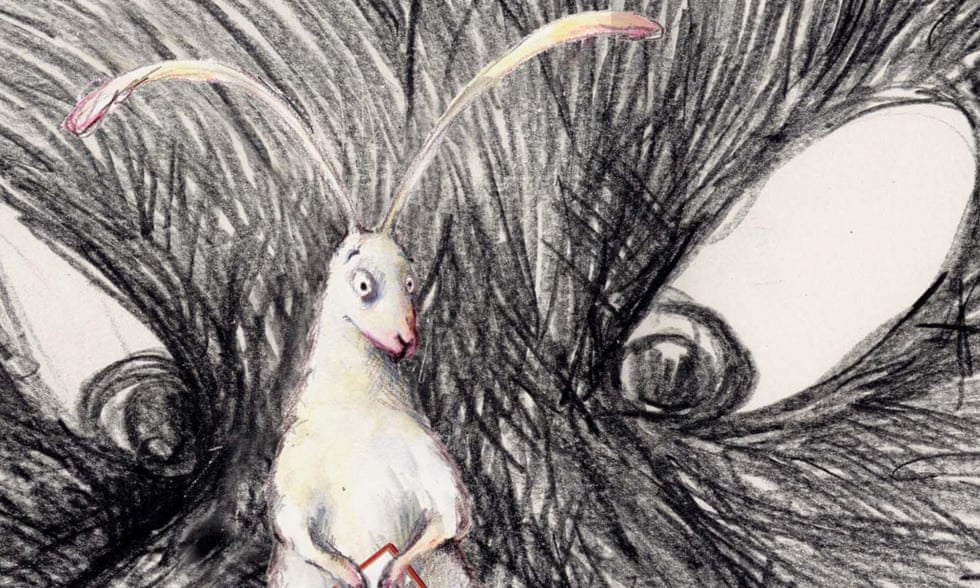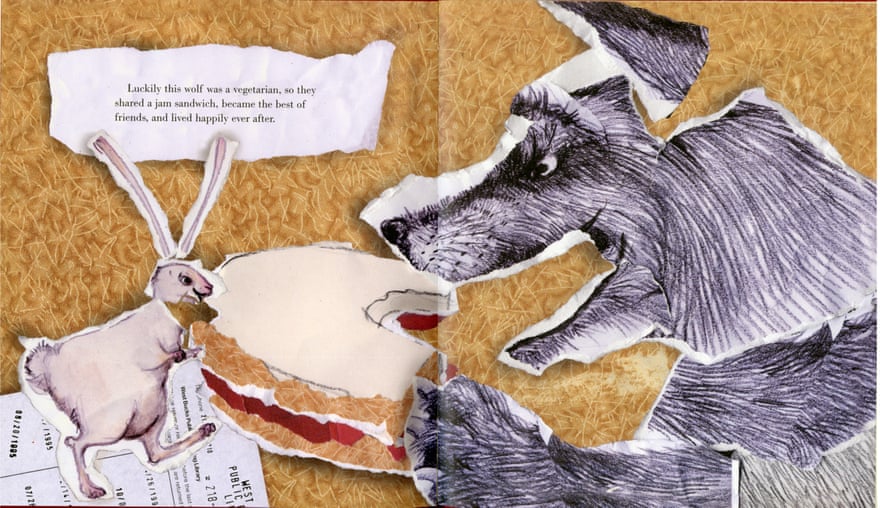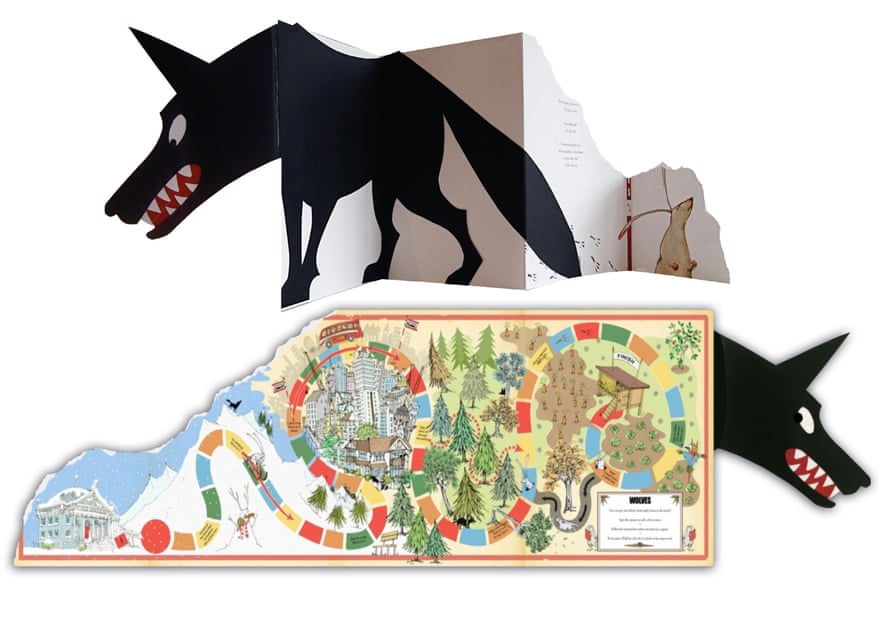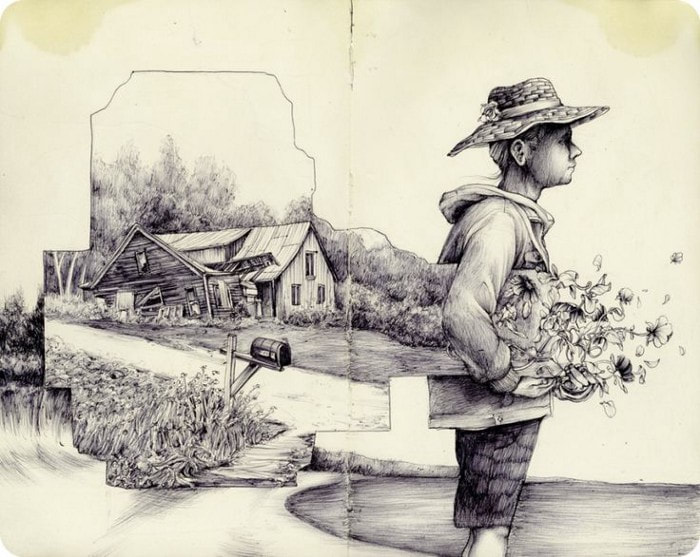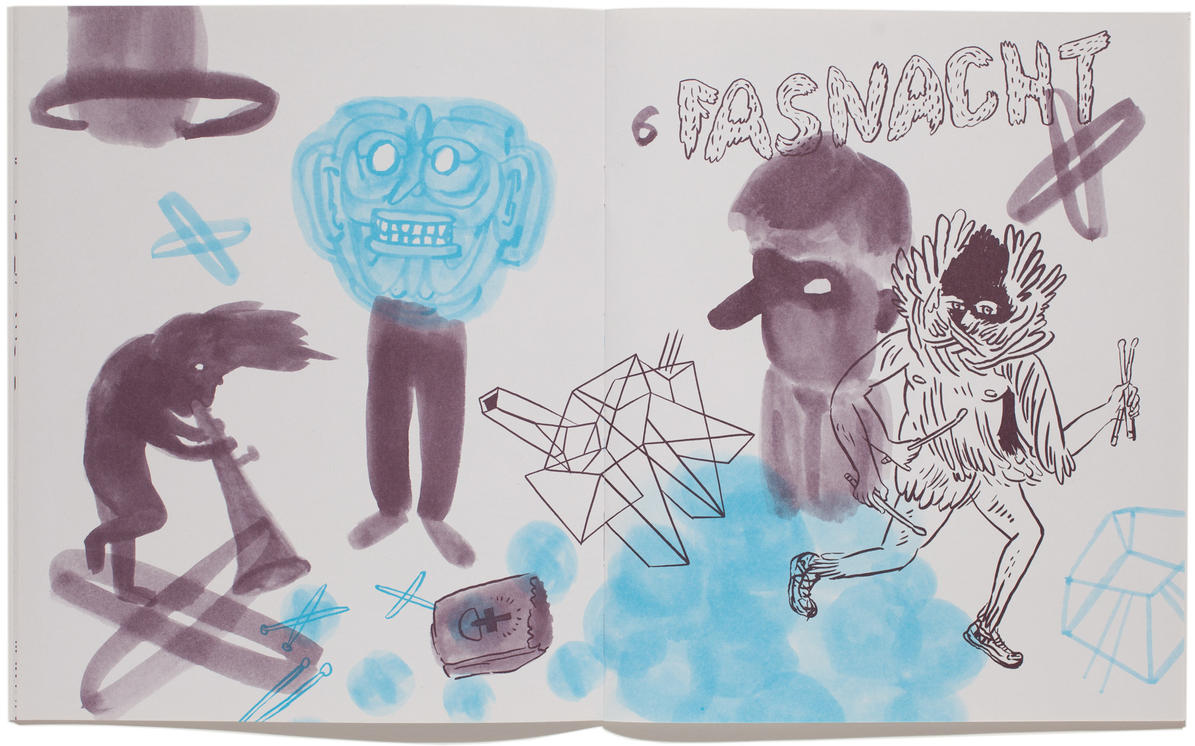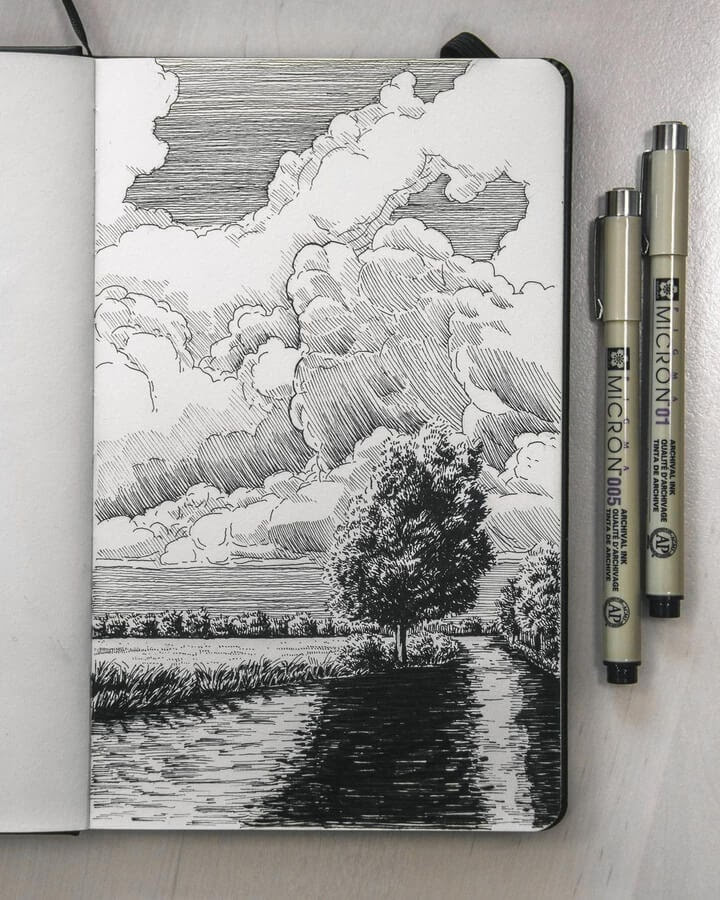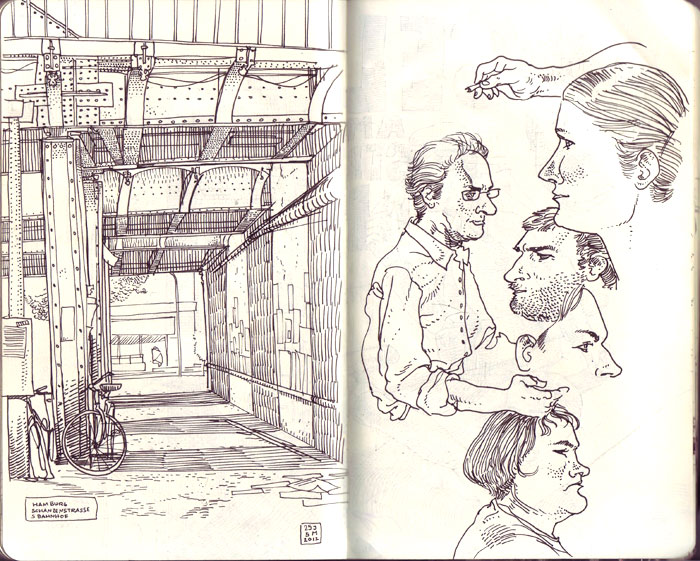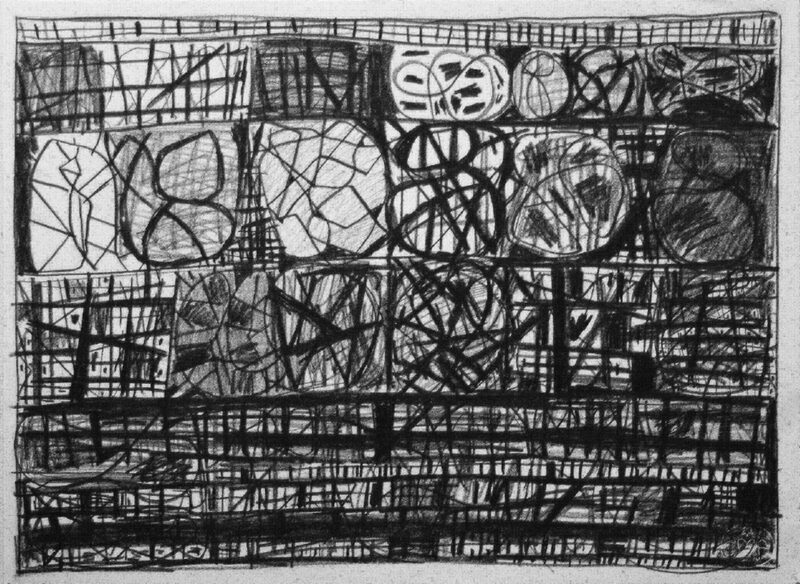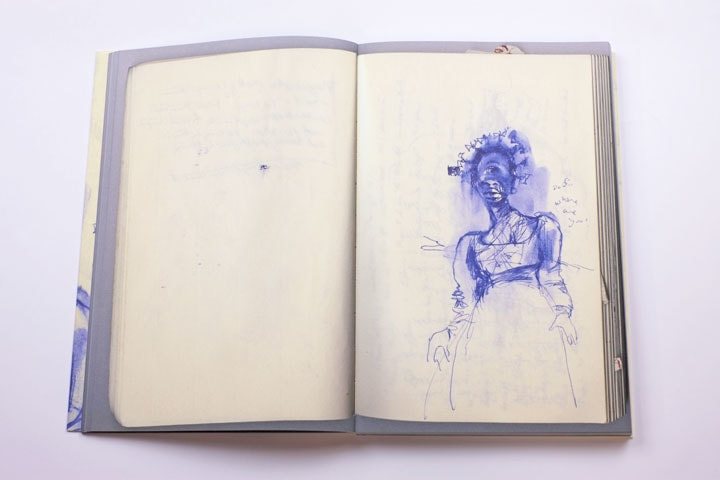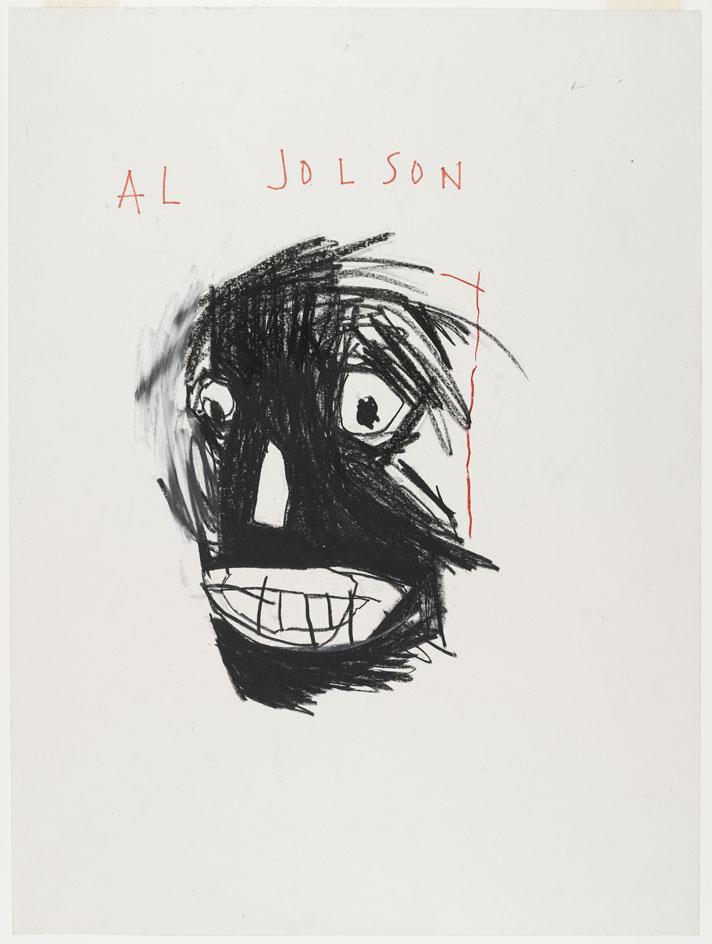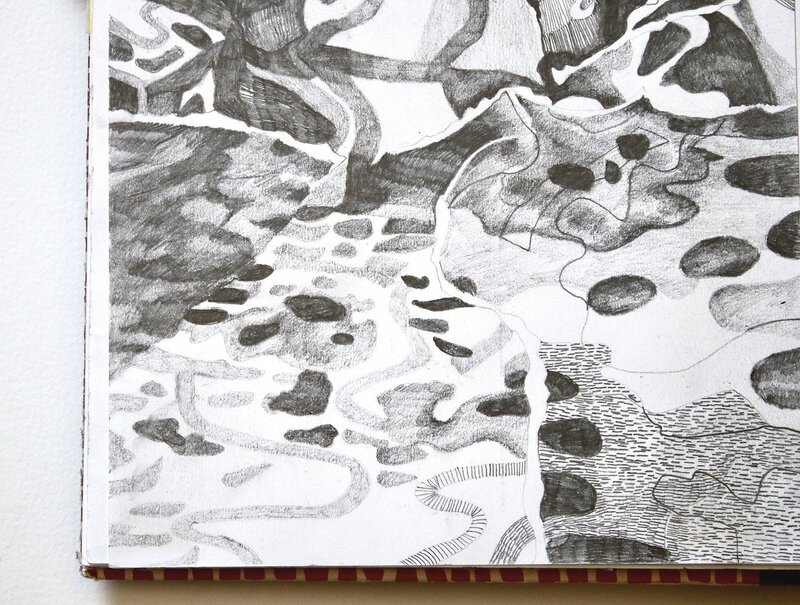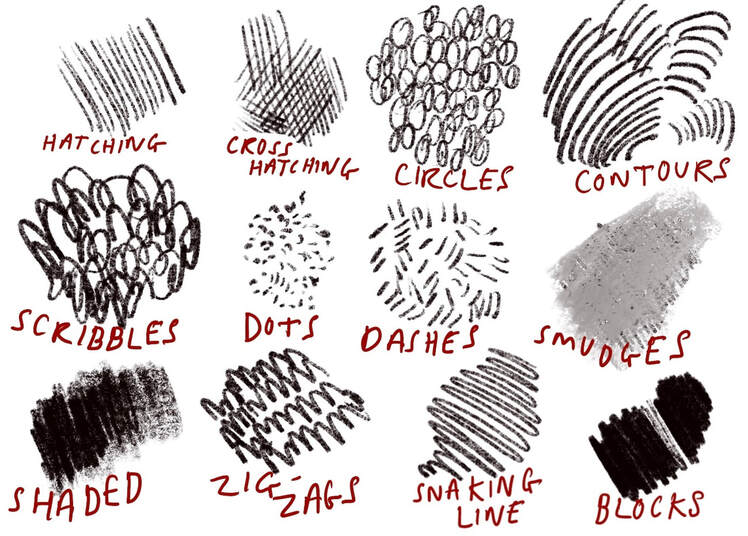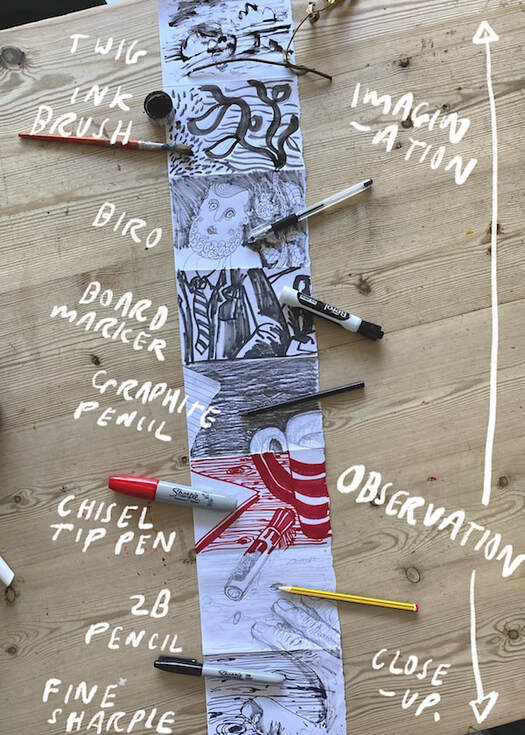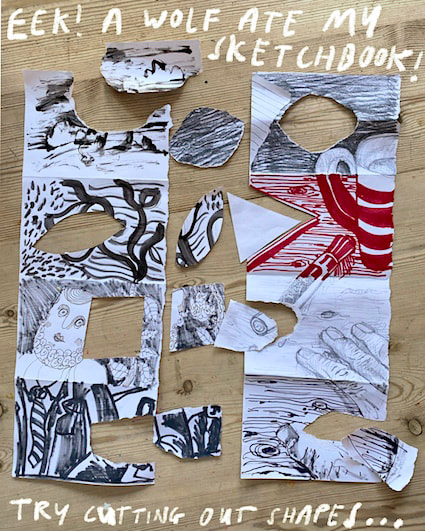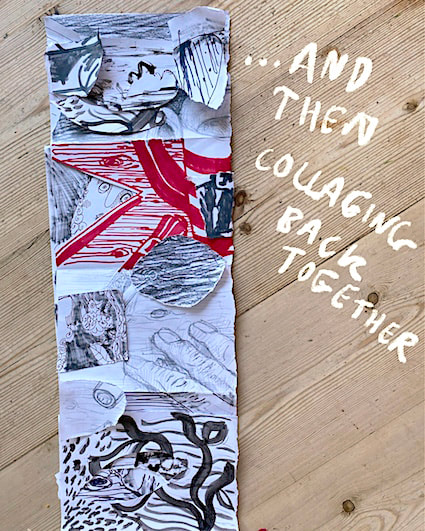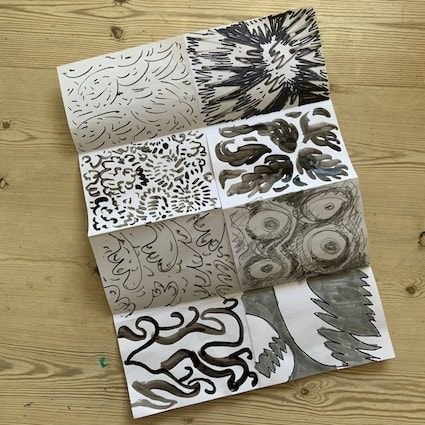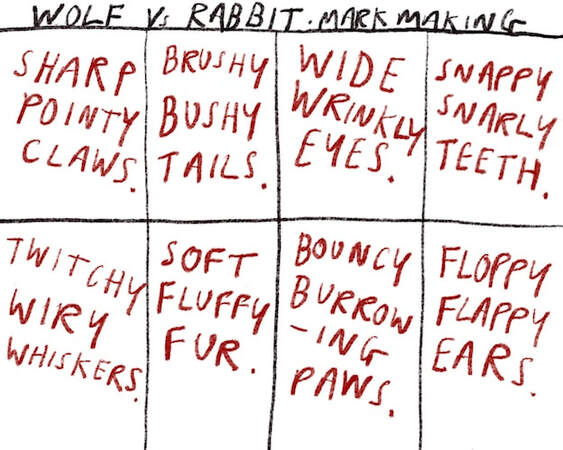PRIMARY RESOURCE
|
'WHAT GREAT BIG EYES YOU HAVE' SAID THE STUDENT. 'All the better to see you with,' the ART TEACHER replied.
IN PICTURES - WOLVES, BY EMILY GRAVETT
Wolves, by Emily Gravett, is an illustrated storybook starring a rabbit, a book, and a wolf. It's a fun example to help us think about drawing, mark making and sketchbook use because, as the pictures above show (click on images to enlarge) ...
- Emily Gravett used a sketchbook to plan her story and to develop her ideas and images.
- Her sketches show a range of drawing and mark making techniques that combine working from observation and reference materials with drawing from imagination.
- The design of the book playfully breaks established 'rules' or expectations - for example, a book called 'wolves' is featured within the book!
- The illustrations combine energetic mark making with controlled and intricate drawing.
- The book also incorporates collage and mixed media techniques.
- The hardback edition also breaks the expectations we might have for a traditional book by playing with its shape and form.
|
|
HOW EMILY MADE ... WOLVESHere, Emily Gravett explains how she developed her book 'Wolves'. Watch the video carefully and then consider the following questions:
What words help to describe:
Experimental, loose, playful, carefree; controlled, detailed, ordered; Pencils, pen, ink, tape, collage, paint; line, texture, shape, pattern, tone; cross-hatched, scribbled, outlined, block coloured; glued, taped, tied; concertina, disrupted, interactive, assembled, constructed. |
SKETCHBOOKS, JouRNALS, Journeys ...
'Wolves' is a story that involves the journey of a rabbit ... reading, wandering over a wolf! This playful excursion allows us to encounter a range of mark making techniques and imaginative viewpoints and compositions.
In many ways, all books offer a journey, especially sketchbooks. Sketchbooks can record different experiences, encounters, ideas and emotions over time and across spaces. Sketchbooks are often described as visual diaries or personal journals.
The two short videos, below, share two different sketchbooks by A level students, Naomi and Rosie. Watch the videos carefully and then consider the following prompts.
In many ways, all books offer a journey, especially sketchbooks. Sketchbooks can record different experiences, encounters, ideas and emotions over time and across spaces. Sketchbooks are often described as visual diaries or personal journals.
The two short videos, below, share two different sketchbooks by A level students, Naomi and Rosie. Watch the videos carefully and then consider the following prompts.
|
|
|
Naomi's sketchbook documents her experiments with portraiture; Rosie's sketchbook shows her interest in colour, mark making and abstraction.
The grid below shows a range of artist and illustrator sketchbooks. These have been chosen for their limited colours to help us look closely at lines, marks, tones and textures. Click on the images to see these larger and then consider the following prompts. There are links below for further insights into these diverse artists.
- How do these individual sketchbooks compare and contrast? Which words help to describe their similarities and differences?
- Why have both students included smaller sketchbooks within these larger books?
- Should a sketchbook always be neat and tidy? And should a sketchbook always explain everything to the viewer?
- Why might artists, or even non-artists, use a sketchbook? What uses and benefits might a sketchbook have?
The grid below shows a range of artist and illustrator sketchbooks. These have been chosen for their limited colours to help us look closely at lines, marks, tones and textures. Click on the images to see these larger and then consider the following prompts. There are links below for further insights into these diverse artists.
From top left to right (click on the artist names to find out more): Pat Perry; Lika Nuessli, Nikita Busyak; Jared Muralt; Stanley Whitney; Kara Walker; Jean Michel Basquiat; Helen Wells; John Graham
- The 9 images, above, show a range of approaches to drawing and mark making in a sketchbook. What words help to connect, contrast and explain these? For example, which pages might you describe as traditional or representational? Which ones do you think are more expressive, or imaginative? Which do you consider the most abstracted?
- Which examples appeal to you most, and why?
- Can you identify which tools/media have been used to create these works?
POTENTIAL ACTIVITY - LINES, MARKS & MOTION
A LINE is a dot that went for a walk. Paul Klee
|
|
This exercise is to encourage you to experiment with different pencils, pens and alternative tools. To begin, use a sheet of A3 paper to create a concertina sketchbook. This will give you 8 pages to work on, working on one side. Use the slideshow, left, to help with this.
|
|
If you are feeling brave, as an extension on this activity ... imagine if a wolf took a few bites out of your work. Or at least you did, by tearing or cutting with scissors). How might this enable you to then play with repairing, contrasting and combining the marks and textures you have created?
Alternatively ...
Once you have created your blank concertina sketchbook you might:
Once you have created your blank concertina sketchbook you might:
- Take a walk around the classroom or school grounds, stopping every 5 steps to fill each page with different marks inspired by the surfaces, textures and viewpoints you encounter.
- Develop a series of mark making experiments in response to a view (or a series of views) across the school fields or grounds. For this, work vertically on your concertina paper, making your way up from bottom to top. Begin by focusing on fine and close-up details, for example the grass immediately at your feet. Notice how, with distance, your eyes begin to see less detail. Consider how you will use your pencils, pens etc. to record these changes in how we focus and see.
POTENTIAL ACTIVITY - CREATURES, UNFOLDING
|
|
This activity invites you to make an experimental sketchbook in response to a range of descriptive words and sentences, below.
|
|
Once you have filled all the boxes with lines, marks, textures and tones using these descriptive sentences you can then fold your book up! See the example below.
|
ADDITIONAL RESOURCES
Exploring artists through their sketchbooks - Jun-Pierre Shiozawa
Sketchbook Ideas - Student Art Guide
Emily Draws .... Wolves - Emily Gravett
Sketchbook Ideas - Student Art Guide
Emily Draws .... Wolves - Emily Gravett
